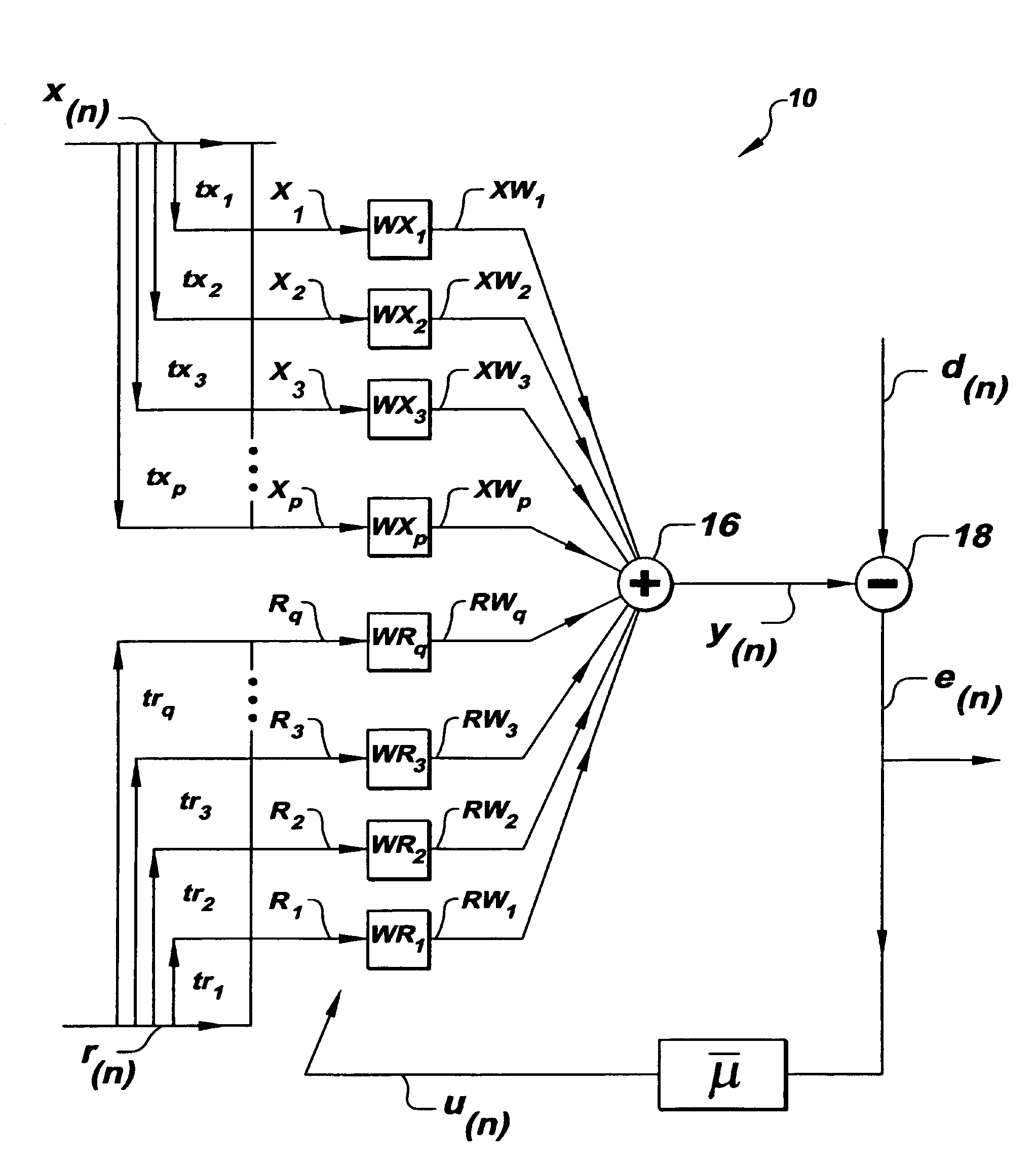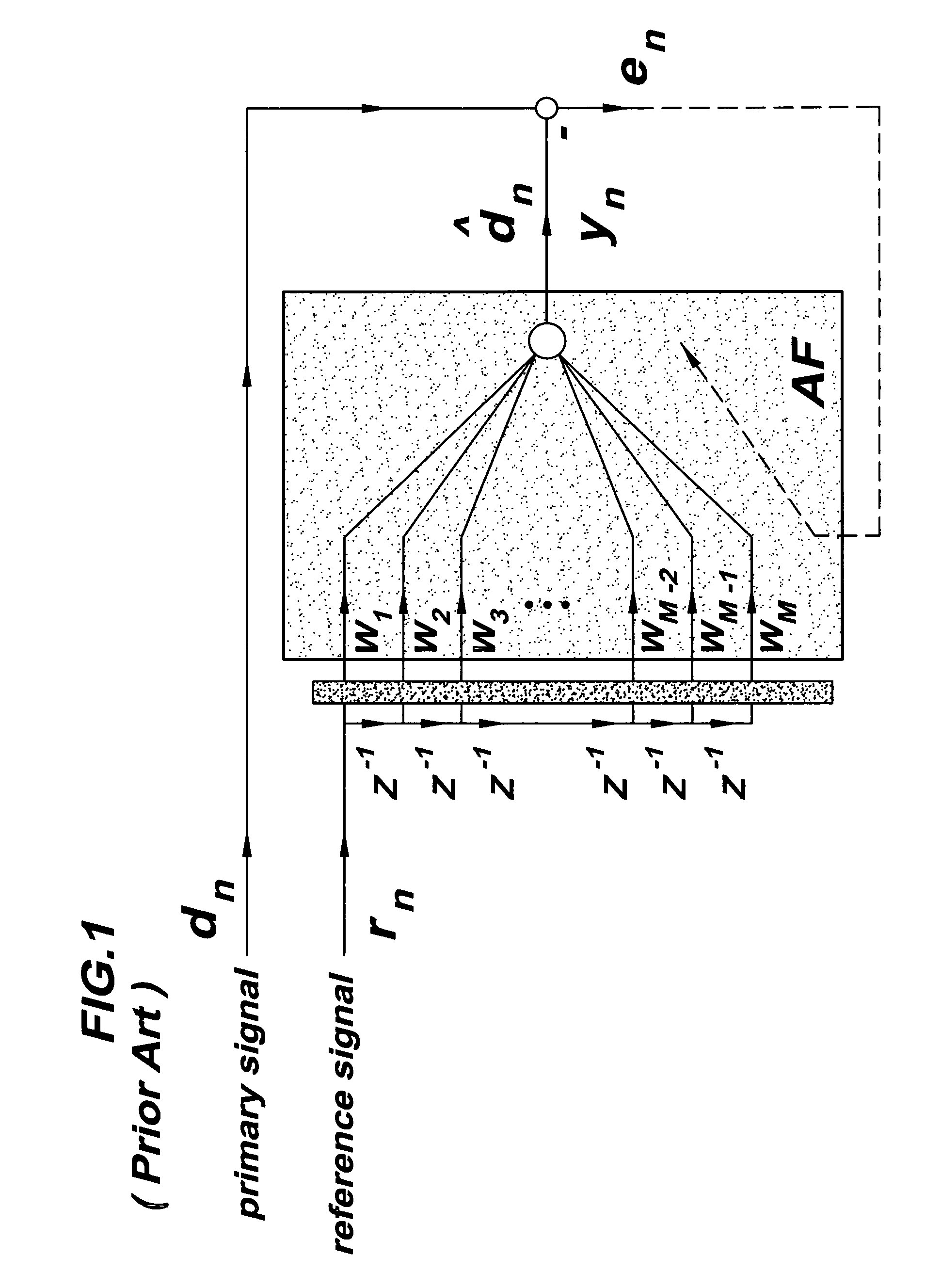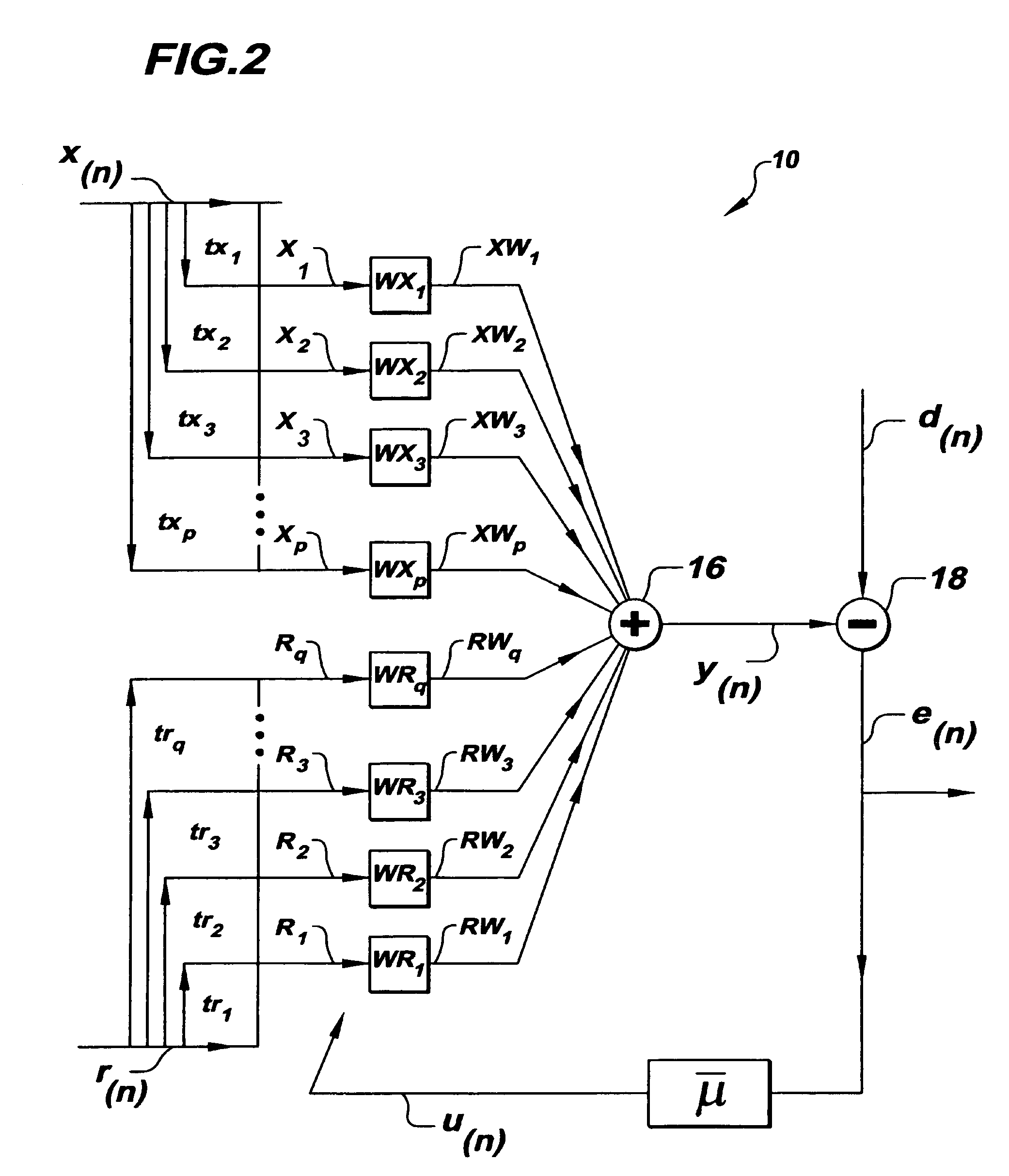Multichannel adaptive filter for noise and/or interference cancellation
- Summary
- Abstract
- Description
- Claims
- Application Information
AI Technical Summary
Problems solved by technology
Method used
Image
Examples
Embodiment Construction
[0011]Referring to FIG. 2, there is shown an embodiment of a multi-channel adaptive filter 10, wherein a first set of p sample auxiliary signals {X1, X2, X3, . . . Xp} are sampled from an auxiliary signal at different times {tx1, tx2, tx3, . . . txp}, respectively, where p is a positive integer. An auxiliary signal is an extra signal that contains useful information as described below. Next, for each of the p auxiliary weights from a set of auxiliary weights {WX1, WX2, WX3, . . . WXp}, and for each of the sample auxiliary signals, one auxiliary weight WXi is applied to a corresponding auxiliary signal Xi to create a set of corresponding weighted sample auxiliary signals {XW1, XW2, XW3, . . . XWp} for all i, where i is a positive integer and i≦p. A first set of q sample reference signals {R1, R2, R3, . . . Rq} are sampled at different times {tr1, tr2, tr3, . . . trq}, respectively, where q is a positive integer. For each of the q reference weights from a set of reference weights {WR1...
PUM
 Login to view more
Login to view more Abstract
Description
Claims
Application Information
 Login to view more
Login to view more - R&D Engineer
- R&D Manager
- IP Professional
- Industry Leading Data Capabilities
- Powerful AI technology
- Patent DNA Extraction
Browse by: Latest US Patents, China's latest patents, Technical Efficacy Thesaurus, Application Domain, Technology Topic.
© 2024 PatSnap. All rights reserved.Legal|Privacy policy|Modern Slavery Act Transparency Statement|Sitemap



